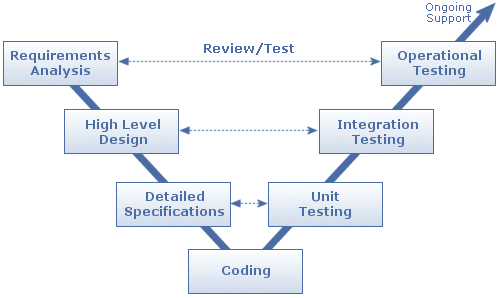It is a process of conducting software testing, means after
programmer conducted integration testing by using white
box testing, the integrated software build is coming to
overall developed software testing. Test Requirements
- Requirement Specification documents
- Functional Specification documents
- Design Specification documents (use cases, etc)
- Use case Documents
- Test Trace-ability Matrix for identifying Test Coverage
Test Planning
- Test Scope, Test Environment
- Different Test phase and Test Methodologies
- Manual and Automation Testing
- Defect Mgmt, Configuration Mgmt, Risk Mgmt. Etc
- Evaluation & identification ? Test, Defect tracking tools
Test Environment Setup
- Test Bed installation and configuration
- Network connectivity?s
- All the Software/ tools Installation and configuration
- Coordination with Vendors and others
Test Design
- Test Traceability Matrix and Test coverage
- Test Scenarios Identification & Test Case preparation
- Test data and Test scripts preparation
- Test case reviews and Approval
- Base lining under Configuration Management
Test Automation
- Automation requirement identification
- Tool Evaluation and Identification.
- Designing or identifying Framework and scripting
- Script Integration, Review and Approval
- Base lining under Configuration Management
Test Execution and Defect Tracking
- Executing Test cases
- Testing Test Scripts
- Capture, review and analyze Test Results
- Raised the defects and tracking for its closure
Test Reports and Acceptance
- Test summary reports
- Test Metrics and process Improvements made
- Build release
- Receiving acceptance







